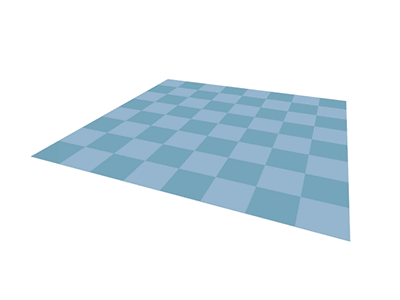Post
Infinite, But Finite
8 February 2012
 Camille Flammarion
Camille FlammarionWhen thinking about the universe, there are some concepts that are hard to wrap your head around. This is particularly true when talking about the shape of the universe. For example, we sometimes talk about how the universe can be flat, but that it could also be finite in size and has no edge. How is that possible?
Let’s start off with a flat sheet of paper. This is your standard two-dimensional picture of the universe. The thing about our sheet of paper is that if we draw a vertical line on our paper, move to the left or right and draw another vertical line, our two lines are parallel. They will never cross no matter how big our sheet of paper is. This is one way to test for flatness. As a counter example, the Earth looks flat, but if we drew a north-south line, moved east and drew another one, our two lines would cross at the north and south poles. This means our roughly spherical Earth is not flat, even though it looks that way on the human scale. So now we have a geometrical rule: on flat surfaces, parallel lines don’t cross (they also don’t spread apart).
So our sheet of paper represents flat space. But, you might say, the paper has edges, does that mean there is an “edge” to space? The answer turns out to be no, and there are two ways we can get rid of our edge. The first is simply to imagine that our sheet of paper goes on forever. No matter how far you trace a line you will never reach an edge, because the paper keeps going on forever. This would be a visualization of an open or infinite universe.
The other way we can get rid of the paper edges is to “connect” each edge to another edge. You might imagine wrapping and taping the sheet of paper, but we don’t have to do that. All we need to do is make a rule: When you get to an edge of the paper, move to the opposite edge and keep going. So if we start to trace a vertical line, we will eventually get to the top of the page. There we follow our rule, move the bottom of the page and keep tracing up. Eventually we will arrive where we started.
 Wikipedia
WikipediaUsing our edge-connection rule, our paper is still “flat”. If we draw a vertical line (all the way around), then move to the right and draw another one, the two lines don’t cross. Of course this time our lines don’t go on forever, they just go round and round and round. This represents a universe that is both flat and closed.
If you imagine the sheet as rubbery, and really connected the sides following our rule, you would get a torus. A torus is “flat”, in that parallel lines don’t cross, but it doesn’t look flat until you unfold it.
So there you have it. We can use our edge rule to imagine a space which is both flat and closed. Just keep in mind, in space there is no real edge that warps you to the other side of the universe. We have to use our trick because we’re playing with paper, which is made of physical atoms and such. Space and time don’t have that limitation, so they can be connected in all sorts of ways and still be flat.
As for what that means cosmologically, I’ll leave that for another time.